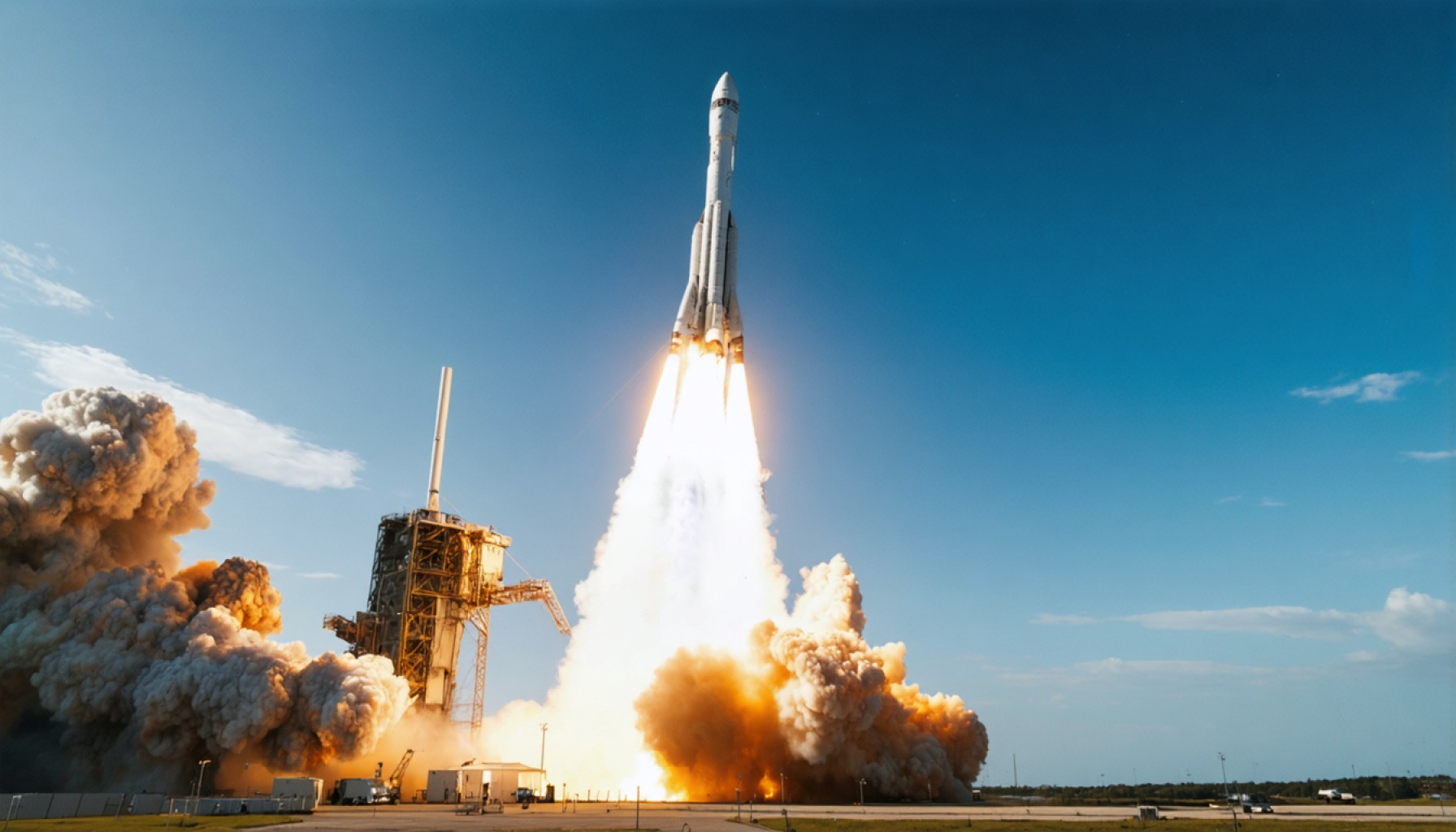- The Falcon 9 rocket from SpaceX is set for launch, carrying 26 Starlink satellites to low-Earth orbit, enhancing global internet connectivity.
- This mission highlights the reusability of rockets, aiming to reduce space debris and promote cost-effective space travel.
- Launch is scheduled at 11:13 a.m. from Vandenberg Space Force Base, with weather conditions permitting.
- The rocket’s first stage will execute a precise landing on the droneship Of Course I Still Love You in the Pacific Ocean.
- Sonic booms from the rocket’s descent may be heard by residents in nearby California coastal counties, marking the advancement of space exploration.
- SpaceX is paving the way for practical and inspirational space travel, ensuring global connectivity in the digital age.
Bright streaks of fire will soon illuminate the skies as SpaceX once again pushes the boundaries of space travel. On a promising Saturday, with precision engineering and a sprinkle of randomness, the iconic Falcon 9 rocket is set to soar from Vandenberg Space Force Base, carrying 26 Starlink satellites to their new home in low-Earth orbit.
This mission, seemingly routine in the fast-paced world of SpaceX, is anything but ordinary. The Falcon 9—sleek, formidable, and imbued with cutting-edge technology—is a symbol of humanity’s relentless pursuit of connectivity. The launch serves a dual purpose: expanding the girds of the Starlink satellite constellation to provide global high-speed internet and showcasing the reusability of modern rockets.
At 11:13 a.m., should weather conditions comply, spectators will witness the Falcon 9 slicing through the California sky, leaving plumes of white in its trail. It’s more than just a spectacle for those in its path, though. As the rocket ascends, its first stage separates with a carefully calculated precision. Minutes later, like a perfectly executed ballet, it returns to land gracefully on the unmanned droneship aptly named Of Course I Still Love You, stationed stoically in the Pacific Ocean.
For residents of San Luis Obispo, Santa Barbara, and Ventura counties, the journey may be as much heard as seen. Sonic booms, the audible signature of the rocket’s rapid descent, could ripple across the coastal landscape. These are the sound bites of the modern era of exploration.
The marvel of reusing rocket stages not only refines the science of cost-effective space travel but also lends Earth a little less burden in terms of space debris. Each launch represents a leap forward in ensuring that anyone, irrespective of geographical barriers, can tap into the reservoir of knowledge in the digital age.
The key takeaway: SpaceX is steadfastly igniting a future where space travel is as pragmatic as it is inspirational, and where global connection ensures everyone can take part in the conversations of tomorrow.
Revolutionizing Connectivity: How SpaceX’s Latest Launch Is Changing the Game
The Next Frontier of Global Connectivity
SpaceX’s recent launch of the Falcon 9 rocket, deploying 26 Starlink satellites, is more than just a technical achievement—it’s a transformative step in global internet connectivity. This event marks not just another addition to SpaceX’s impressive resume but a critical advancement towards a future where high-speed internet is accessible to everyone, regardless of their geographical location.
Expanding the Starlink Constellation
1. Objective and Impact: The primary goal of the Starlink satellites is to create a network capable of providing high-speed internet globally. By adding these satellites, SpaceX continues to expand its constellation, aiming to reduce latency and increase bandwidth, which is crucial especially in underserved areas. This expansion positions Starlink as a major player in bridging the digital divide (source: Starlink).
2. Satellite Technology: Each Starlink satellite is equipped with advanced phased array antennas and a single solar array for power generation. They are designed to communicate with each other using laser links, reducing dependency on ground stations and enhancing service in remote locations.
The Power of Reusability
1. Rocket Technology: The Falcon 9 rocket is designed for multiple launches, significantly reducing the cost per launch and minimizing space debris. This mission marked another successful utilization of reusability, with the first stage landing on the droneship Of Course I Still Love You. This aspect underscores a sustainable approach to space travel.
2. Environmental Benefits: Reusing rocket stages lowers the environmental impact of rocket launches, as fewer rockets need to be manufactured, reducing industrial waste and resource consumption (source: SpaceX).
Real-World Applications and Benefits
1. Immediate Benefits: For communities in remote or underserved regions, Starlink’s promise of high-speed internet translates into improved access to education, healthcare, and economic opportunities. This is especially crucial during times when digital connectivity is a lifeline.
2. Future Forecast: The global satellite internet market is projected to grow as major tech firms and new entrants aim to develop similar capabilities. This growth is expected to spur advancements in areas such as IoT, autonomous vehicles, and smart cities (source: Grand View Research).
Addressing Common Questions
– How does satellite internet compare to traditional broadband?
Satellite internet, particularly services like Starlink, provides comparable speeds to traditional broadband but with broader coverage, particularly in areas where laying cables is impractical or too costly.
– What are the potential limitations?
While satellite internet promises global coverage, challenges such as latency in data transmission and weather interference remain. However, continuous improvements in satellite technology are gradually mitigating these issues.
Actionable Recommendations
– Stay Updated: For those interested in the latest developments in satellite technology and SpaceX launches, keep an eye on updates directly from SpaceX.
– Consider Starlink: If you reside in an area with limited internet options, consider subscribing to Starlink as an alternative high-speed internet service.
– Educate Yourself: Engage with online resources or forums to understand the implications of satellite internet on global connectivity.
In conclusion, SpaceX’s relentless advancements in rocket and satellite technology not only make space travel more accessible but are also shaping the future of global communication and connectivity. As we witness each launch, we are ushered closer to a world where knowledge and opportunities are within everyone’s reach.
